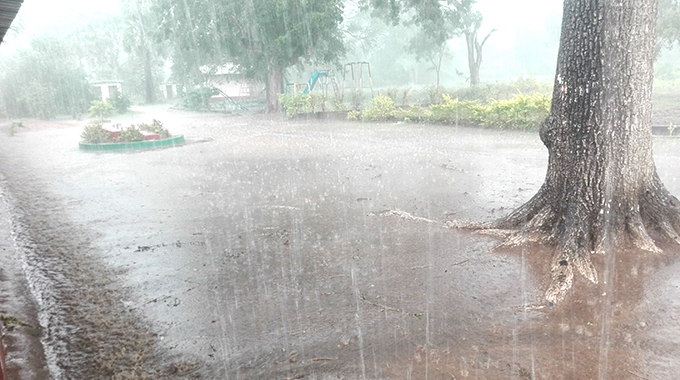
Elita Chikwati Senior Agriculture Reporter
Farmers have been busy planting, replanting or grooming their crops since last Tuesday as most parts of the country received good rains. Some parts of Mashonaland Central Province recorded above 60 millimetres of rainfall.
Short season varieties, small grains, beans and sunflower are among the crops now being planted, with farmers who were fortunate to have established crops with the first rains that fell last year, weeding and applying compound top-dressing fertiliser.
Meteorological Services Department senior forecaster Mr James Ngoma yesterday said the highest rainfall was received on Thursday at Mupfurudzi Resettlement (64 millimetres), Arcturus (61 mm), Wedza (43mm), Mt Darwin (43mm), Chipinge (39mm) and Harare Golf Club (39mm).
“On Friday, Buffalo Range received 77mm, Karoi 61mm and Masvingo 51mm. Other significant falls were recorded at Rupike 44mm, Zaka 37mm, Mukandi and Tsholotsho 31mm. On Saturday, Rupike received 22mm, Tsholotsho 19mm, Victoria Falls 14mm and Mutoko 12mm,” he said.
The country is expected to continue receiving rains until tomorrow. During the weekend, a number of areas had received significant rains although some areas had only received light showers.
Agritex principal director Mr Joseph Gondo yesterday confirmed that there was a hive of activity in most farming areas.
“Farmers have taken advantage of the recent rains which are quite substantial in a number of areas. Those who had not planted are now planting while others who had poor germination are replanting. Some are planting appropriate crops such as cowpeas, sugar beans and short-season varieties of other crops.
“Some farmers who had failed to apply top dressing fertilisers are now taking advantage of the moisture to do so,” he said.
Mrs Depinah Nkomo from the Zimbabwe Indigenous Women Farmers Association Trust said although the rains had not reached all areas, farmers were making use of the rains they have received.
“Farmers are concentrating on weeding, while others are applying top dressing fertiliser. Some are plantings sorghum.
“We hope the rains will spread to all areas. It is unfortunate that in some areas such as the southern parts of the country, some maize is now a write-off,” she said.
Seed Co head of agronomy, Mrs Wendy Madzura, said climate change vagaries had prompted the need for farmers to adopt climate-smart crops that help mitigate against the effects of climate change.
“The false start to the season, recurrence of mid-season droughts, heat waves, droughts, floods and the premature termination of the rainfall season over the years have seen the need for farmers to incorporate small grain production in their farming enterprises. Small grains crops include cereals, pulses or legumes and oil seed crops,” she said.
Mrs Madzura said cereals such as millet, rapoko and sorghum were suited for dry conditions.
“Over the years they have been recommended for low rainfall areas which include region four and five. However, it has become apparent that every farmer should aim to grow these drought-tolerant crops even in high potential areas, especially in light of the recent evidence of climate change,” she said.
Agriculture expert and Agriseeds director (sales and marketing) Mr Ivan Craig said the rains had brought relief to farmers.
“Those who have received rains should be top dressing their crops. Weeding is also important to reduce competition for moisture between crops and weeds. There is need for farmers to ensure moisture is retained for the long term benefit of the crops.
“Farmers can still plant sorghum, cowpeas, sugar beans, sunflower and other short season varieties,” he said.
He said farmers in areas that are yet to receive rains should be preparing to use the rains when they come.
“The farmers in these areas should be cultivating their fields so they can be able to harness the rains and preserve moisture. Farmers should also watch out for pests such as the Africa and armyworm and fall armyworm. It is critical to make trenches in the field to harness the moisture,” he said.
